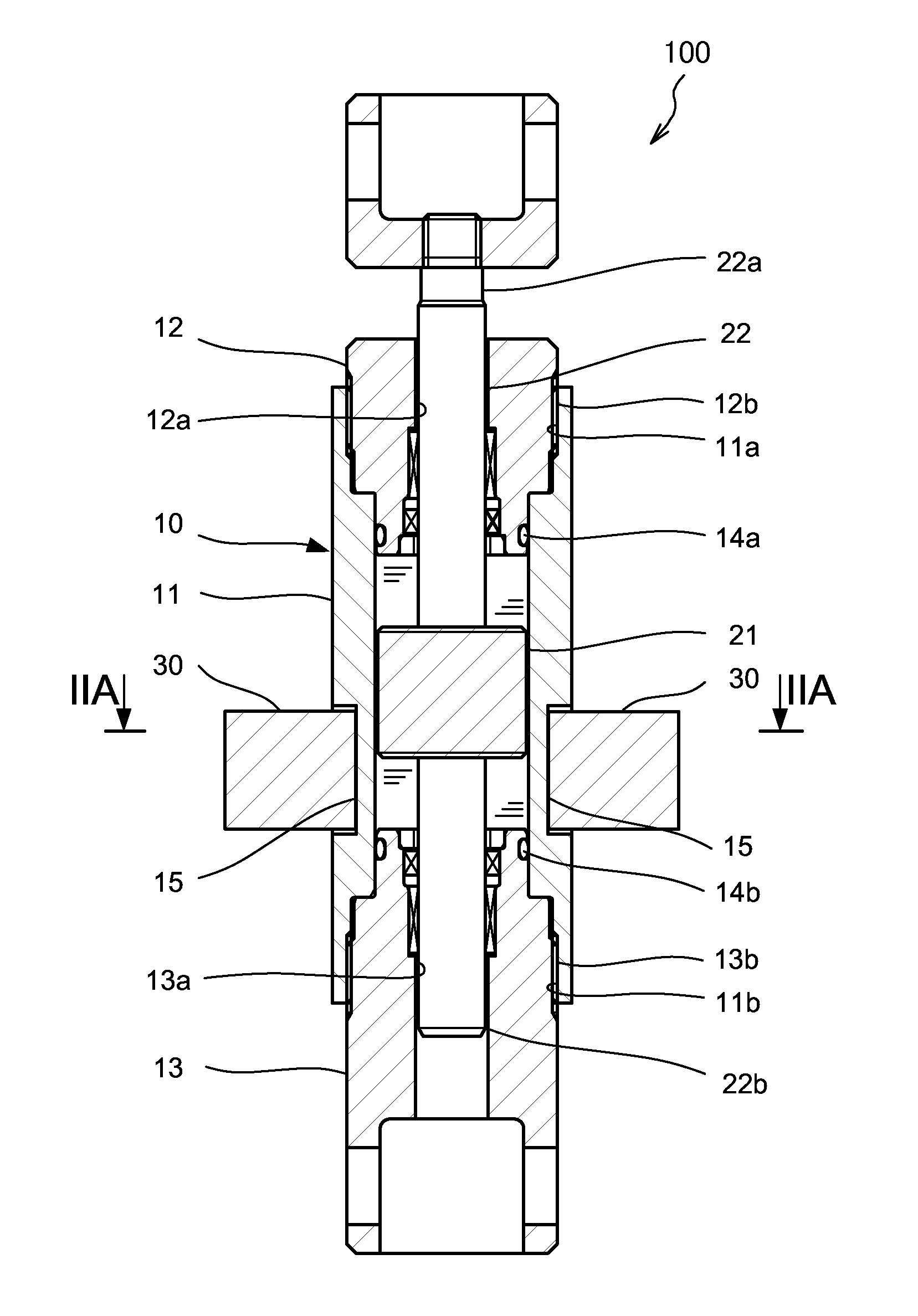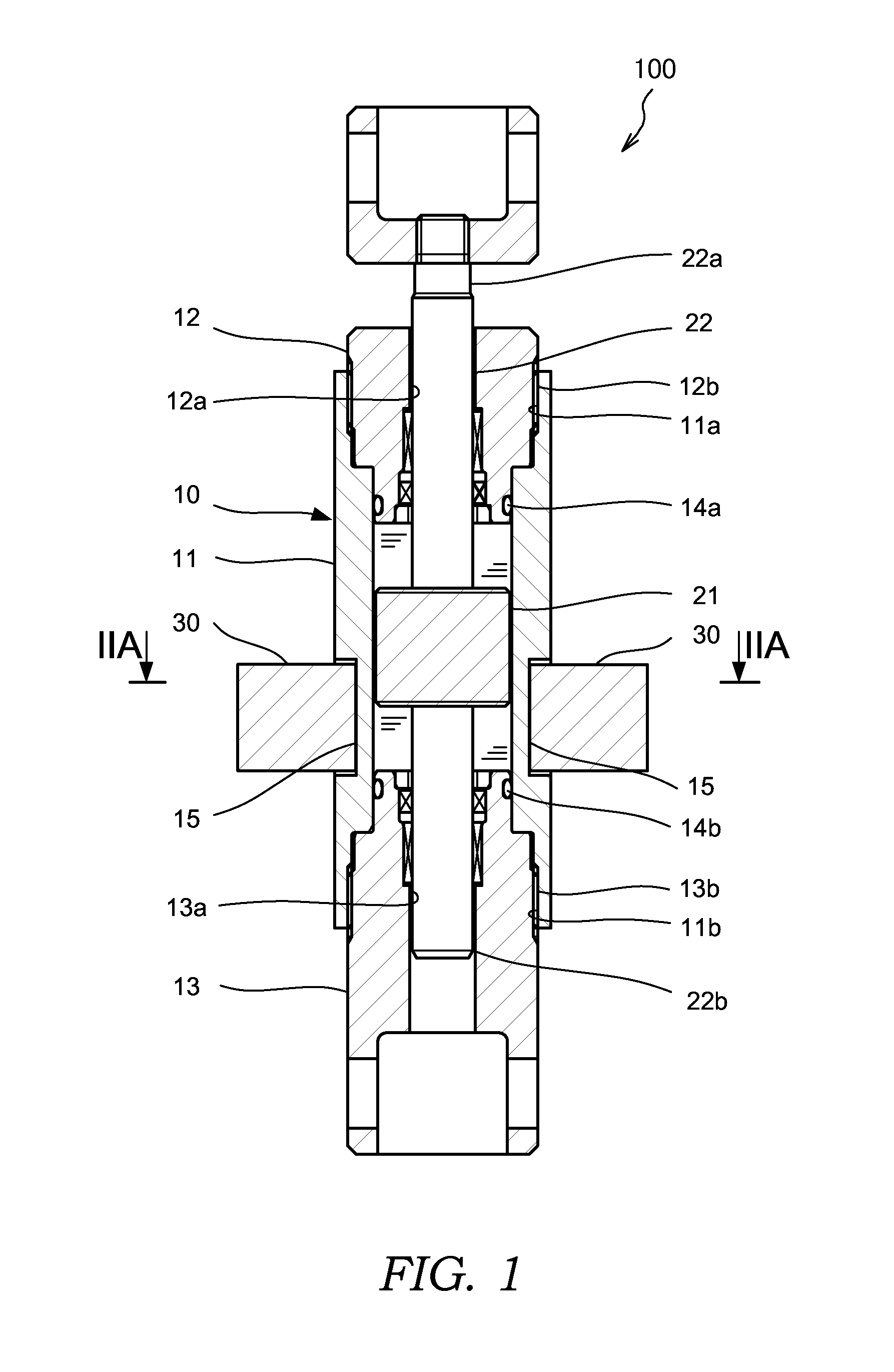Magnetorheological fluid shock absorber
- Summary
- Abstract
- Description
- Claims
- Application Information
AI Technical Summary
Benefits of technology
Problems solved by technology
Method used
Image
Examples
first embodiment
[0017]First, referring to FIG. 1, an overall configuration of a magnetorheological fluid shock absorber 100 according to this invention will be described. FIG. 1 is a sectional view of the magnetorheological fluid shock absorber 100.
[0018]The magnetorheological fluid shock absorber 100 is a damper in which a damping coefficient relative to a force applied in an axial direction can be varied using a magnetorheological fluid that is varied in viscosity by an action of a magnetic field. The magnetorheological fluid shock absorber 100 is formed such that the damping coefficient thereof varies proportionally in accordance with a stroke amount of a piston 21.
[0019]The magnetorheological fluid shock absorber 100 includes a tubular cylinder 10 having a magnetorheological fluid sealed into an inner periphery thereof, the piston 21, which is disposed in the cylinder 10 to be free to slide in an axial direction of the cylinder 10, a piston rod 22 to which the piston 21 is connected, and a magn...
second embodiment
[0061]In the second embodiment, the permanent magnets 31 are magnetized by groups of magnetic poles in the radial direction, as shown in FIG. 4B. In the example shown in FIG. 4B, one of the permanent magnets 31 is magnetized to an N pole on the inner peripheral surface 31a side and an S pole on the outer peripheral surface 31b side. The other permanent magnet 31 is magnetized to an S pole on the inner peripheral surface 31a side and an N pole on the outer peripheral surface 31b side. The pair of permanent magnets 31 are disposed in the magnet portion 30 such that opposite magnetic poles oppose each other about the central axis of the cylinder 10. In other words, the magnetic poles of the pair of permanent magnets 31 differ from each other.
[0062]With this configuration, the magnet portion 30 generates a magnetic field in the direction of an arrow shown in FIG. 4A. In other words, by disposing the pair of permanent magnets 31 so that opposite magnetic poles oppose each other, magnetic...
PUM
 Login to View More
Login to View More Abstract
Description
Claims
Application Information
 Login to View More
Login to View More - R&D
- Intellectual Property
- Life Sciences
- Materials
- Tech Scout
- Unparalleled Data Quality
- Higher Quality Content
- 60% Fewer Hallucinations
Browse by: Latest US Patents, China's latest patents, Technical Efficacy Thesaurus, Application Domain, Technology Topic, Popular Technical Reports.
© 2025 PatSnap. All rights reserved.Legal|Privacy policy|Modern Slavery Act Transparency Statement|Sitemap|About US| Contact US: help@patsnap.com



